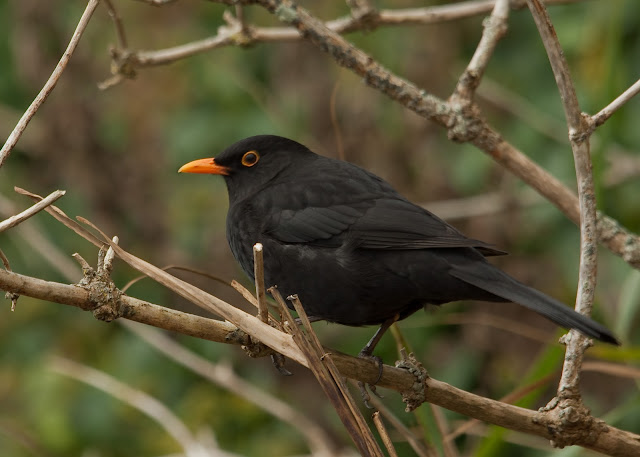Out at sea three Slavonian Grebe patrolled the channel between the point and the island. They were firmly in the sun making photography impossible, but I assume they were the same three present last weekend when I managed to take a record shot of them as they battled in the teeth of a gale.
Very heavy crop of two of the three Slavonian Grebes
The Med gull group seems to be growing. There were at least eleven birds present today. There have always been Med gulls at Hannafore, but in the past these have been restricted to one or two individuals. Over the last couple of years the numbers have risen - first five, then seven, eleven and now up to eighteen birds. It was John Nicholls who told me the last number - the highest count I've heard of at this site. It was good to see John, even better was the fact that he was birding! moths have been his passion for the last couple of years but he seems to have become interested in gull movements at Hannafore, particularly the Great Black-backs ringed(rung?) by Bruce over the last two summers. He has recorded 36 different birds from this year as well as 18 from last year and has also recorded birds ringed elsewhere in Britain and from as far away as Norway.
John - (just finished having a pee!!)
I was particularly pleased, nay ecstatic to find that the Pipits have returned in force. Winter numbers have been fairly low for the last five or so winters with around 20 Rock Pipits and no more than three or four Meadow Pipits. At the moment there at at least 50 Rock and 20 Meadow - more than enough to keep me happy until they disappear in March. Those of you who know me will know that I love Pipits - particularly Rock Pipits. I find them endlessly fascinating and I think we still have a lot to learn about them. I tell anyone who will listen that I believe the vast majority of birds in Cornwall in winter are Scandinavian littoralis rather than the nominate petrosus even though officially the county has fewer records of the former than proper rarities such as Richard's Pipit. One day I will prove it!!
One bird has a ring. This is great news because I can spend the winter trying to read it.
Hopefully this ring will have a Stockholm address
Unfortunately there were quite a few dog walkers out on the beach today so the birds were pretty flighty and getting any kind of decent photo was all but impossible. There was however one Meadow Pipit which hung on just long enough for a couple of passable photos.
There was also just time to grab a couple of photos of some of the other common stuff we tend to forget about.
Hopefully the promised bad weather over the next few days will stir things up a little. In the past I've seen Little Auk, Leach's Petrel and even Desert Wheatear here in December but I know that working this patch is hard and the rewards are lean so I'll be happy with just the Pipits for now.








































